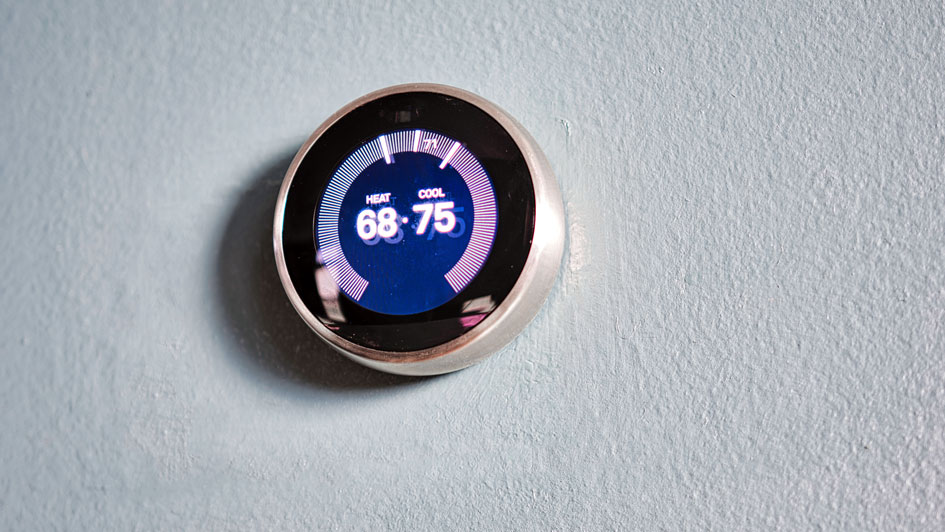
A Nest Thermostat is an excellent tool for keeping your home comfortable, no matter what the season or weather. With a number of innovative features meant to maximize efficiency, convenience and comfort, a Nest Thermostat is the perfect solution if you want to manage your energy use — lowering your monthly bills in the process.
That’s why more homeowners are considering adding devices like a Nest to their homes. If you want to put in a Nest for your own home, reach out to an expert for smart thermostat installation in Lexington.
From automated scheduling to monitoring your home’s energy efficiency, Nest is designed to make securing your sense of comfort effortless.
Want all the details? Take some time to review these 12 things you should know about your Nest Thermostat.
1. Resetting Your Nest Thermostat
The first thing to know about resetting a Google Nest Thermostat is that resetting is different from restarting.
- Restart: A common feature in consumer electronics, including your phone or computer, restarting your Nest Thermostat simply turns it off and then back on. This maintains all your settings and is a step to take if your Nest is frozen or not connecting to Wi-Fi.
- Reset: A more drastic function, a reset should restore your Nest to its original settings from the manufacturer. For the most part, homeowners will perform a reset when they’re moving to a new home and bringing the thermostat with them, or if they are moving out and want to erase their personal information from the Nest before leaving it behind for the next resident.
If you want to perform a reset, it doesn't hurt to write down current temperature settings so reapplying them is faster. Next, find Settings -> Equipment and record your system wires, heating type and safety temperature settings.
Then, to manually restart or reset your Nest, go to Settings, select Reset and press. You will then have five options:
- Restart: Turns your Nest off and reboots it while saving your settings. Another way to restart is to press the outside of the Nest and hold it there until it turns black, at which point you can remove your hand.
- Schedule: This type of reset clears any info about your temperature schedule—including for your hot water, if you have that programmed into your Nest. By choosing this kind of reset, you’ll need to create a new schedule or wait while your Nest learns your schedule.
- Away: An Away reset gets rid of any programming your Nest has picked up about how often you walk by, so that it can change the temperature accordingly.
- Network: By selecting a network reset, it will remove all your network information and your Nest is disconnected from Wi-Fi. Use this option if you want your Nest to forget your Wi-Fi password.
- All Settings: This reset clears all your personal settings and learning.
2. How to Connect Nest Thermostat to Wi-Fi
Connecting to Wi-Fi is important if you want the most use of its online features.
To connect your Nest to the internet:
- Access the Quick View menu. This is done by turning the thermostat's outer ring.
- Select the Settings icon.
- Select Network.
- As your Nest scans available networks, locate your Wi-Fi and, if needed, put in your password.
3. Does a Nest Thermostat Have a Battery and How Long Will the Battery Last?
Nest thermostats receive power from your HVAC system, but also have a rechargeable lithium-ion battery for backup power in case of an outage. According to Google, the maker of Nest, a Nest Thermostat battery last an average of several months. Recharge it with the USB cord that comes included.
4. How to Turn Off a Nest Thermostat
If you plan on being away for a couple weeks, you can set your Nest Thermostat to Off mode, though Eco mode is also a good option. Using Off mode will turn off all of your regular heating and cooling schedules, but it will still adhere to any current Safety Temperatures to keep your home from getting dangerously hot or cold.
To choose Off mode on the thermostat:
- Press and hold the touch bar until it displays “Turn Off” before sliding the bar to highlight Turn Off, and then touch the bar to select.
- You can also go to Mode from the main menu and select Off.
Off mode is available on the Google Home app as well:
- Select Thermostat from home screen
- Tap Temperature mode
- Select Off
5. Can Alexa Control a Nest Thermostat?
Yes, you can use Amazon Alexa to control a Nest Thermostat. Alexa can also be integrated with with Nest doorbells and cameras. Google's own voice control technology, like Google Assistant, can be used to operate your Nest.
6. Does a Nest Thermostat Work Without Wi-Fi?
In short, yes. Your Nest Thermostat can still control temperatures even without Wi-Fi. That being said, without Wi-Fi a Nest doesn’t have the smart thermostat functions that most people enjoy.
7. Are You Able to Lock a Nest Thermostat?
If you’re having a battle over the thermostat in your home between people who like things hot and others who prefer them cold, Nest can help you bring a little order back to your household.
A user can 'lock' the Nest to keep it from making any adjustments outside of a preset range. This doesn’t lock in a specific temperature—a locked Nest still has access to programmed settings—but simply keeps these settings from being changed.
To lock a Nest:
- Tap the Settings icon, scroll to the bottom and find Lock.
- Enter a 4-digit pin number you can remember, and keep in mind this has to be entered twice.
- To lock your Nest in Heat or Cool mode, select your maximum and minimum temperature range before tapping Lock at the bottom of the screen.
For unlocking it, open the settings and choose Unlock. As soon as you've provided your 4-digit pin, your device will be unlocked.
8. How to Control a Nest Thermostat from Your Phone
Nest thermostats can be controlled by your Google Home app, which is accessible on your phone as well as a computer. Other versions of Nest, including the Nest Thermostat E and Nest Learning Thermostat, can also be controlled remotely by the Nest app.
Before you can control a Nest on your phone with Google Home or the Nest app, you need to follow a few steps:
- Download the Google Home app or, with premium Nest models, the Nest app to your phone.
- Plug in your Nest Thermostat.
- Start the Google Home app on your phone and complete the setup process, link to your new device and connect to Wi-Fi.
- There is a guided setup tool on Google, for those needing extra assistance in connecting.
Once you’ve added your Nest to your Home app, you can find and adjust it by clicking Thermostat on the home screen. Once you do that, you can change your Nest temperature by dragging your finger along the screen or tapping on a plus or minus sign.
The app also allows you to change the Nest's preset temperatures. From the home screen, select Thermostat and then select Settings. At this screen, press Temperature Preferences and then Temperature Presets. Current presets for Comfort, Eco and Sleep modes will be displayed. Choose the appropriate setting to change the temperature for that preset.
9. Creating a Nest Thermostat Schedule
You can set a temperature schedule on a Nest Thermostat either on the device or on the Google Home app. Newer and advanced models of the Nest, such as the Nest Thermostat E and Nest Learning Thermostat, are also controllable with the Nest app.
You have two primary ways to establish a temperature schedule on a Nest Thermostat:
- Quick Schedule: The Quick Schedule feature is based on the national average schedule for energy efficiency. When you are setting up your Nest, the Google Home app allows you to change the temperature with a schedule. If you choose that option, it will show a preset schedule and allows you to make changes. After you've made all your choices, that’s the schedule it will use.
- Temperature Presets: For changing the Nest's preset temperatures, open the Google Home app and select Thermostat. Then, tap Presets and choose Edit. As soon as you're finished making updates, select Done.
For anyone wanting to edit their schedule, open the Google Home app, select Thermostat and then tap on Schedules. Find the time of week you want to add a temperature to. Once you pick the day, tap Add and find the preset you want. Finally, select Time before touching and dragging the numbers to change the time. The changes won't save unless you select Done.
10. How to Set a Temperature Range on a Nest Thermostat
Your Nest's Eco mode is great for setting temperature ranges. This is a function that adjusts the temperature in your home depending on if anyone is in the residence or if it is empty.
To customize the Nest temperature range in Eco mode, go to Settings and select Eco. The thermostat's display should list existing “Heat to” and “Cool to” temperature settings. You can select each and make any and all adjustments. Once you're finished, select Done.
11. What to Do if a Nest Thermostat Is Not Compatible
Nest thermostats are compatible with most HVAC systems. Google, Nest's manufacturer, offers a compatibility tool that presents a few questions related to your location and existing setup to see which Nest model would be compatible with your system.
If you have a Nest and believe it’s not compatible with your system, it’s best to reach out to a professional for smart thermostat installation in Lexington. An experienced technician will be able to evaluate your system and, if your Nest is compatible, install it quick so you can jump right into the savings and convenience.
12. How Do I Manually Control My Nest Thermostat?
Nest Thermostats are packed with features designed to improve comfort while keeping costs low. However, you can actually turn off the smart features if you prefer manual controls similar to normal thermostats.
Bear in mind, by doing this you clear all your temperature schedules and allowing the Nest to work like any other thermostat—it will display the temperature and allow changes, but that’s about it.
Setting your thermostat to manual controls can be accomplished with the following steps:
- Auto-Schedule: From the main screen, go to Settings and then scroll to Nest Sense. Go to Auto-Schedule, select No and click Done.
- Eco: From the main screen, go to Settings, scroll to Eco. Once in Eco, select Off for both the current Heat to and Cool to temperatures, and select Done.
- Home/Away Assist: From the main screen, go to Settings and select Home/Away Assist. Then, select Stop Using and click Done.
- Reset: Once you’ve turned off the settings, reset your nest. From the main screen, go to Settings and select Reset, highlight Schedule and then select Reset to clear out any saved scheduling data.

